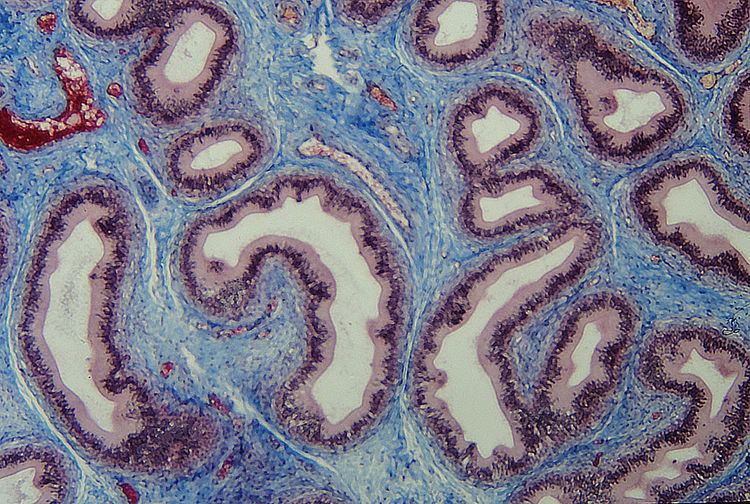 | ||
Connective tissue (CT) is one of the four types of biological tissue that supports, connects or separates different types of tissues and organs in the body. It develops from the mesoderm. The other three types are epithelial, muscle, and nervous tissue. Connective tissue is found in between other tissues everywhere in the body, including the nervous system. In the central nervous system, the three outer membranes (the meninges) that envelop the brain and spinal cord are composed of connective tissue.
Contents
All connective tissue consists of three main components: fibers (elastic and collagenous fibers), ground substance and cells. (Not all authorities include blood or lymph as connective tissue.) Blood and lymph lack the fiber component. All are immersed in the body water.
The cells of connective tissue include fibroblasts, adipocytes, macrophages, mast cells and leucocytes.
Structure
Connective tissue can be broadly subdivided into connective tissue proper, and special connective tissue. Connective tissue proper consists of loose connective tissue and dense connective tissue (which is further subdivided into dense regular and dense irregular connective tissues.) Special connective tissue consists of reticular connective tissue, adipose tissue, cartilage, bone, and blood. Other kinds of connective tissues include fibrous, elastic, and lymphoid connective tissues. New vascularised connective tissue that forms in the process of wound healing is termed granulation tissue. Fibroblasts are the cells responsible for the production of some CT.
Type I collagen, is present in many forms of connective tissue, and makes up about 25% of the total protein content of the mammalian body.
Characteristics
Characteristics of CT:
Types of fibers:
Function
Connective tissue has a wide variety of functions that depend on the types of cells and the different classes of fibers involved. Loose and dense irregular connective tissue, formed mainly by fibroblasts and collagen fibers, have an important role in providing a medium for oxygen and nutrients to diffuse from capillaries to cells, and carbon dioxide and waste substances to diffuse from cells back into circulation. They also allow organs to resist stretching and tearing forces. Dense regular connective tissue, which forms organized structures, is a major functional component of tendons, ligaments and aponeuroses, and is also found in highly specialized organs such as the cornea. Elastic fibers, made from elastin and fibrillin, also provide resistance to stretch forces. They are found in the walls of large blood vessels and in certain ligaments, particularly in the ligamenta flava.
In hematopoietic and lymphatic tissues, reticular fibers made by reticular cells provide the stroma—or structural support—for the parenchyma—or functional part—of the organ.
Mesenchyme is a type of connective tissue found in developing organs of embryos that is capable of differentiation into all types of mature connective tissue. Another type of relatively undifferentiated connective tissue is mucous connective tissue, found inside the umbilical cord.
Various type of specialized tissues and cells are classified under the spectrum of connective tissue, and are as diverse as brown and white adipose tissue, blood, cartilage and bone. Cells of the immune system, such as macrophages, mast cells, plasma cells and eosinophils are found scattered in loose connective tissue, providing the ground for starting inflammatory and immune responses upon the detection of antigens.
Clinical significance
It is estimated that 1 in 10 people have a connective tissue disorder. Diseases of connective tissue include:
Staining of connective tissue
For microscopic viewing, most of the connective tissue staining-techniques, color tissue fibers in contrasting shades. Collagen may be differentially stained by any of the following:
